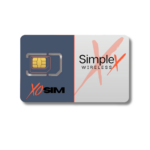
Introducing Simplex Open SIM (xoSIM)
September 24, 2024
Embedded SIM cards (MFF2) in IoT Projects
October 28, 2024APN settings with eSIM Management
We now have the new SGP.32 eSIM for IoT specification rolling out. It’s great that we have now as an industry standardized remote eSIM Management with an easy-to-use eSIM spec effectively combining the best of Consumer (SGP.22) and M2M (SGP.02) specification.
There are a few small print items that are often not mentioned by companies pitching the new specification. One of the items is BIP support. We discussed the challenges around that with our article https://www.simplexwireless.com/2024/05/20/the-devil-is-in-the-details-when-it-comes-to-iot-devices/ and we are addressing BIP support validation with our program “Works with Simplex” https://www.simplexwireless.com/works-with-simplex/
In this article we will focus on the Device APN settings when performing an eSIM download. The problem description is that when I use an eSIM from Simplex the APN is “simplex.iot” and when using eSIM from MNO B the APN is “internet”. If you switch a device remotely from Simplex to MNO B then it means the APN on the device has to be reconfigured from simplex.iot to “internet” otherwise the device will not be able to establish a data session.
Here we’ll go into options that are available to enterprises to set the APN when performing an eSIM download from one carrier to another.
eSIM download and APN configuration options
Default Bearer /LTE Available
This is a feature in 4G LTE network that refers to the mechanism by which a mobile device connects to the network and establishes a data connection by fetching the appropriate Access Point Name (APN) from the network. How this works is that when the device powers on or enters the LTE network, it initiates an attachment process to connect to the network.
During this process, the network determines the appropriate APN for the device based on its subscription profile stored in the Home Subscriber Server (HSS).
This feature must be enabled on the Device and Network for it to work. Simplex Wireless has this feature enabled on the network side.
Same APN name across eSIMs
This method provides that you do not need to configure the APN when the eSIM changes as the APN name stays the same. For example, Simplex Wireless uses multiple MNOs to provide service and all the Simplex eSIMs use the same APN “simplex.iot” this enables seamless eSIM switching and management across all the Simplex Carriers without any issues.
Smart Card Bootstrap
The Smart Card Bootstrap mechanism for setting an APN (Access Point Name) refers to a method by which a mobile device retrieves network configurations, such as APN settings, from the SIM card (Subscriber Identity Module) or UICC (Universal Integrated Circuit Card). This allows devices to automatically configure themselves with the correct APN settings without user intervention or manual configuration.
This is a mechanism that was created in the early 2000’s but never really adopted by the OEMs as they would configure the APN based on Carrier Bundles (iOS, Android). Now with the popularity of eSIMs it is gaining momentum again and for example is supported by iOS 16.1 forward.
Here’s the link to the specification: https://www.openmobilealliance.org/release/DM/V1_3-20120306-C/OMA-TS-DM_Bootstrap-V1_3-20120306-C.pdf
Java Applet on SIM card
One of the possibilities is to have a Java Applet on the SIM card that manages the APN name. The Java Applet is able to issue AT commands towards the modem and with this configure the connect APN alongside the correct eSIM. We have not seen this method in action but according to the specs this is a possibility.
Device Management Systems
It is worth mentioning in this article that typical standards based or vendor specific Device Management Systems have the ability to configure the APN remotely. However, the timing of when to switch the APN from one to the other has to be timed correctly with the eSIM management operation for it to be effective and we will not speculate the effectives of them here as we just do not know.
Conclusion
We gathered a few known mechanisms on how to configure the APN on a device. We are sure that we missed some, please drop us a line if you know of some that we have missed!
This article was written by Jan Lattunen, CCO Simplex Wireless
About the Author: Jan Lattunen manages Sales and Marketing for Simplex Wireless. Jan has 20 years’ experience in working with SIM card technology and was involved in launching the eSIM in North America with major carriers and OEMs. His expertise in telecommunications is around SIM cards. On a personal note, Jan is a family man and avid cyclist with advocacy for safety in the roads. You can connect with Jan on https://linkedin.com/in/JanLattunen


